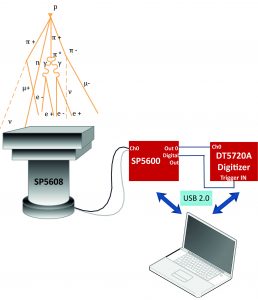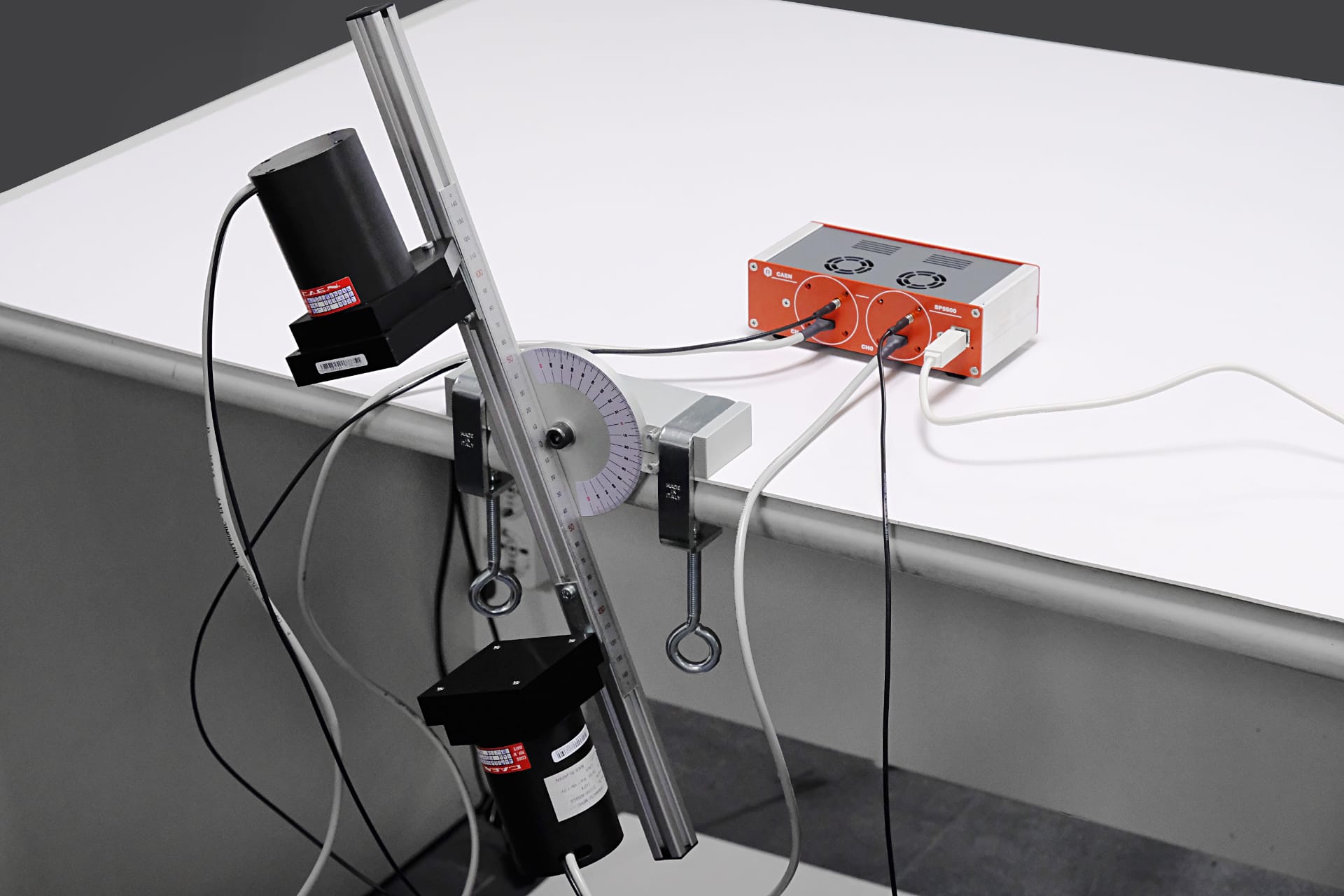| Difficult | Execution Time | Data Analysis | Radioactive Sources |
|---|---|---|---|
| No | Yes |
Hardware setup
This experiment guide is referred to the SP5600AN/D educational kit. If you don’t have this kit, choose your own from the following list to visualize the related experiment guide:
Equipment
- SP5600D/AN – Educational Beta Kit
Purpose of the experiment
Measurement of the muon vertical flux on a plastic scintillating tile. Estimation of the detection efficiency of the system by comparison between the expected rate and the measured one.
Fundamentals
Muons lose about 2 GeV to ionization before reaching the ground with average energy around 4 GeV. The production spectrum, energy loss in the atmosphere and decay of the muons are convoluted in their energy and angular distribution. The integral intensity of vertical muons is:
Iv ≈ 82 m-2s-1sr-1
and their flux for horizontal detectors is ≈ 1 cm-2min-1 at energies higher than 1 GeV at sea level, as know in literature.
Carrying out the experiment
Open the SP5608 and remove the plastic scintillating tile. Close the SP5608 and connect its power cable and its MCX cable to one channel of the SP5600. Connect the two outputs of the chosen channel to DT5720A: the analog output to the channel 0 and the digital output to “trigger IN“ of the digitizer. Use the default software values or optimize the operating voltage of the sensor to reach an higher photon detection efficiency (PDE). The first measurement step is the evaluation of the noise (Dark Count Rate) as a function of the discriminator threshold. Because of the DCR, the system has to be made sensitive to the cosmic ray flux relying on the acquisition time of the sensor signal. The thresholds shall be set to reduce the random coincidence rate below the Hertz level. Switch off the power supply, open the SP5608 top, spread the optical grease on the SiPM and insert the scintillating tile. Close the support top, switch ON the power supply and reset the previous configuration parameters. Measure the muons counting rate and estimate the cosmic flux.

Experimental setup block diagram
Results
The expected rate of muons across the scintillating tile is very low, requiring a fine tuning of the system in order to achieve a significant reduction of the random count rate and enhance the system sensitivity. Considering the zenith dependence of flux (I(θ)=Iv cosθ2) and the integration over the solid angle, the expected cosmic rate due to the geometry system can be estimated and the detection efficiency can be evaluated.

Cosmic vertical flux ad a function of altitude and atmospheric depth2


